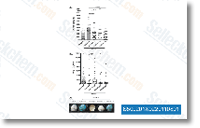rufifemur distinguished their partner in the non nestmate colony, however the Ca. rufifemur ants had been only confronted with cues, presented on odourless dummies, These cues had been whole cu ticular extracts, cuticular hydrocarbons only, and crematoenones only, each time from intra and allocolonial Cr. modiglianii. The cuticular hydrocarbons of different Cr. modiglianii colonies show only quantitative differences. however, people colonies living with each other together with the red Ca. rufifemur wide range possess two hydrocarbons that are absent from those living with the black range, Camponotus rufifemur didn’t differentiate involving dead intracolonial and dead allocolonial Cr. modiglianii employees. However, they discriminated between their extracts and particularly between their hydrocarbon frac tions. Cuticular extracts of allocolonial Cr. modiglianii elicited significantly a lot more aggression than intracolonial ones.
The hydrocarbon fractions of allocolonial Cr. modiglianii triggered selleck inhibitor quite high aggression, whilst hydrocarbon fractions of intracolonial Cr. modiglianii were taken care of amicably, This differential aggression was extremely signifi cant. In contrast, the behaviour in direction of the crematoenone fractions was mostly peaceful for both intracolonial and allocolonial cues. Similarly, a re mixture of hydrocarbon and crematoenone fractions of allocolonial Cr. modiglianii acquired small aggression, which corresponds to your weaker differentiation between the 2 total extracts in comparison to the two hydrocarbon fractions. A black Ca. rufifemur worker colony from a distinct parabiosis showed comparable behaviour, appreciably differentiating in between hydrocarbon fractions of intra selleck chemical BAY 11-7082 and allocolonial Cr. modiglianii but not involving their complete extracts or their crematoenone fractions, In contrast for the two black Ca.
rufifemur colonies, on the other hand, a red Ca. rufifemur colony never showed greater aggression in direction of allocolonial Cr. modiglianii deal with ments. The red Ca. rufifemur staff were confronted with dead workers, complete extracts, hydrocarbons, and crematoenones of a single non nestmate Cr. modiglianii col ony, and with  dead workers and hydrocarbons of two fur ther non nestmate Cr. modiglianii colonies. In no situation did the red Ca. rufifemur staff demonstrate major differenti ation in the intracolonial Cr. modiglianii, The addition of allocolonial Cr. modiglianii crematoenones to diverse extracts substantially lowered aggressiveness of Ca. rufifemur employees. They strongly attacked dead bodies of Crematogaster coriaria and Cr. difformis, as well as their cuticular hydrocarbons and those of allocolonial Cr. modiglianii. Nonetheless, Ca. rufifemur was appreciably less aggressive to each of these treatment options soon after addition of allocolonial Cr. modiglianii crematoenones, The impact was signifi cantly increased for Cr.
dead workers and hydrocarbons of two fur ther non nestmate Cr. modiglianii colonies. In no situation did the red Ca. rufifemur staff demonstrate major differenti ation in the intracolonial Cr. modiglianii, The addition of allocolonial Cr. modiglianii crematoenones to diverse extracts substantially lowered aggressiveness of Ca. rufifemur employees. They strongly attacked dead bodies of Crematogaster coriaria and Cr. difformis, as well as their cuticular hydrocarbons and those of allocolonial Cr. modiglianii. Nonetheless, Ca. rufifemur was appreciably less aggressive to each of these treatment options soon after addition of allocolonial Cr. modiglianii crematoenones, The impact was signifi cantly increased for Cr.
Aurora kinase B
Aurora kinase B was identified in humans by a polymerase chain reaction screen for kinases that are overexpressed in cancers
